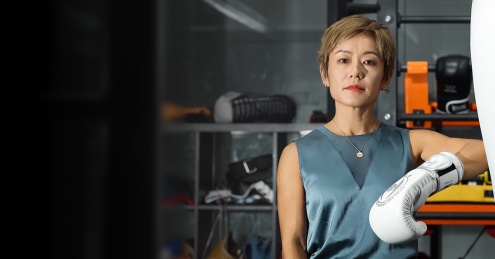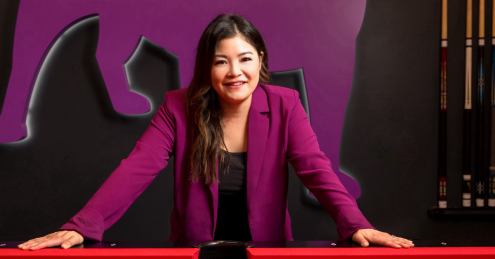Q&A with Scott
This Q&A reflects Scott's time as Director of Marketing at Jam City. Currently, Scott is Director of UA at Bumble.
Scott Palmer is Director of Marketing for Jam City’s user acquisition team. As a ten-year veteran of the gaming industry, Scott has led growth efforts on games such as Cookie Jam, Harry Potter: Hogwarts Mystery, and Panda Pop, helping turn them into the mega hits they are today. In his role, Scott manages the team’s in-house systems, tools, and process workflow to optimize automation across global user acquisition operations, helping to scale the next big hits.
Read Scott's latest article: "Improving User Acquisition Through Automation: 3 Things to Automate Right Now"
In your own words, could you tell us about the apps that you manage?
Jam City has a fantastic portfolio of mobile games, ranging from our smash hit Cookie Jam to the immersive RPG Harry Potter: Hogwarts Mystery. Our user acquisition team has a real challenge, supporting growth for over ten titles produced by six different studios worldwide. To do this effectively, we need to employ a suite of in-house tools to streamline and organize our media buying process.
My job is to oversee implementation and improvement of those tools. My goal is to maximize efficiency and automation to eliminate time-consuming and repetitive areas that put a break on our work. We want our media buyers to redirect their time towards solving meaningful problems that will move the business forward.
How did you get started in mobile marketing?
In 2012, I joined a small game development studio in Shanghai. My purpose was to ensure success for the studio’s mobile games in English-speaking markets, but I had little to no experience with media buying. Mobile UA was in its infancy, and there were limited resources for someone new to the space. I spent many late nights Skyping with partners and vendors who were gracious enough to lend me their expertise, while also reading anything I could get my hands on.
What do you like most about mobile marketing?
Experimentation is my absolute favorite facet of mobile marketing. I enjoy developing theories on how to more effectively acquire players, structure tests for the hypotheses, and find out whether or not it was true. It’s far more complex than simply testing surface-level questions; effective UA requires comprehension of our player base paired with a technical understanding of the mobile ad landscape.
What does it take to succeed in mobile marketing?
When I look at the qualities of my colleagues, the common factor is diligence. I’m lucky enough to work with a team that cares about the quality of their work and help foster an environment where everyone wants to do better. User acquisition is an endless journey of problem-solving and tenacious individuals are the best suited for the adventure.
What strategies work best to convert installs into engaged app users?
Converting an install into an engaged player starts with the ad creative. Good creatives for mobile gaming are important because it’s the very first touchpoint we have with a player. Creatives set the player’s expectations for the game and give them that first impression. At Jam City, we use ad creative to tap into a player’s motivation to pique their interest. If we can identify what motivates someone to play one of our games, then we have a great chance at conveying that in an ad and turning them into an engaged user.
In the past year, what is one tip you can share that made the biggest performance difference for your UA strategy?
We’ve greatly benefited from cross-functional collaboration with other departments. As companies grow, it’s all too easy for teams to become insulated and act as independent components of a factory line. Many companies still function this way, with growth teams driving new users while expecting those managing the product(s) to worry about engagement, retention and monetization. Knowledge sharing and educating teams on how UA operates has allowed us to collaborate and improve our creative services, data infrastructure, and analytics. UA is only becoming increasingly challenging, so we have to look internally to find the golden opportunities to improve our performance.
How have you pivoted your app marketing strategy in response to the current climate as a result of the global pandemic?
As the world began to shelter-in-place, we saw a massive uptick in player activity as well as substantial growth in installs from paid and organic. At the same time, CPMs dropped substantially due to many advertisers pulling their spend. These factors gave us an excellent opportunity to share our games with an audience looking for new forms of entertainment while they were stuck at home. However, asking a UA team to scale their spend overnight (while maintaining ROAS) can be quite a challenge. Fortunately, Jam City has invested heavily into building the tools and infrastructure needed to manage such an opportunity. This allowed us to focus on strategy, and not worry too much about the time needed to execute campaign launches or budget changes.
What advice can you offer marketers to successfully re-engage mobile app users?
Have a rock-solid plan for measuring incremental lift and create a framework to understand that lift from your campaigns. Many developers, especially in gaming, will throw money blindly at re-engagement, thinking some of their total marketing budget should be allocated to it. Companies should invest more time and resources to test different audience segments, as well as the right creative and messaging that will bring players back to a game/product. Without the proper infrastructure, retargeting can easily become another black hole your ad dollars get dumped into.
What’s your top tip when it comes to mobile ad creative?
All too often, mobile marketers and creative teams are inundated with ideas for ad creative from colleagues. An executive may share an article and ask your team, “Why haven’t we tried this?” Creative teams wind up getting pulled in many different directions and lose focus. The best defense against this is to build robust creative testing strategies and develop a roadmap for creative development. Equally important is the ability to log these tests and resurface them when needed.
What advice can you offer to help marketers combat mobile ad fraud?
If you’re at a loss for handling mobile ad fraud, then the first resource should be your MMP. MMPs have the tools to help create the first line of defense while also being a great resource to learn from. There’s a lot of tech out there to help but it’s the advertiser's responsibility to be vigilant and address potential fraud. Building alerts on top of reporting can allow advertisers to catch suspicious behavior that may otherwise go unnoticed.
What is your go-to resource for keeping up with the mobile ad tech industry?
As of late, I’ve spent way too many hours reading through SKAdNetwork breakdowns put out by Singular. They’ve been a phenomenal resource for an industry trying to steer through the misty fog of iOS 14.
I flock to Twitter for less filtered, no-BS takes from various industry leaders. It’s always nice to read through the occasional hot take that may stir up a bit of controversy.
Lastly, I always carve out time on Monday mornings to read through Mobile Dev Memo. Eric Seufert does a great job of asking questions that many developers haven’t yet considered for themselves.






















